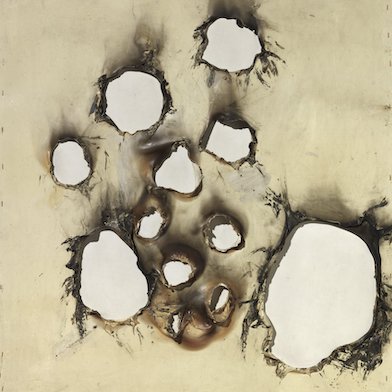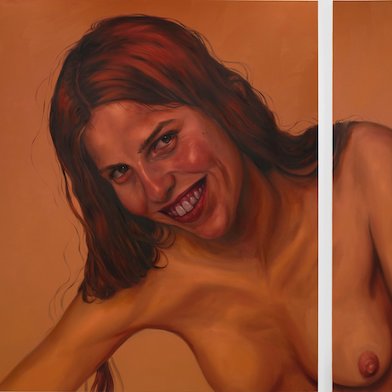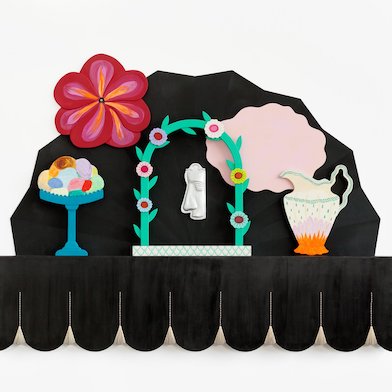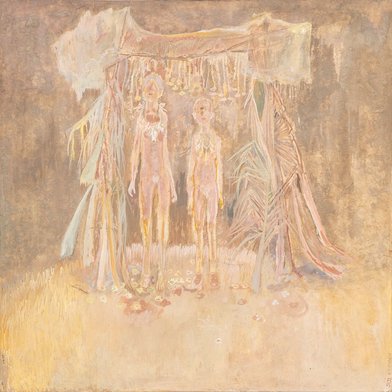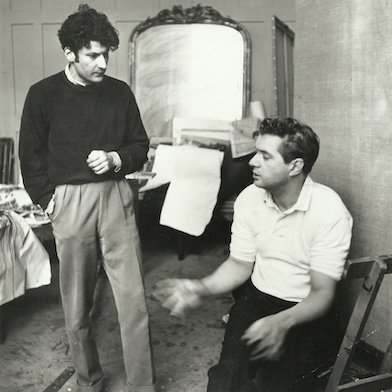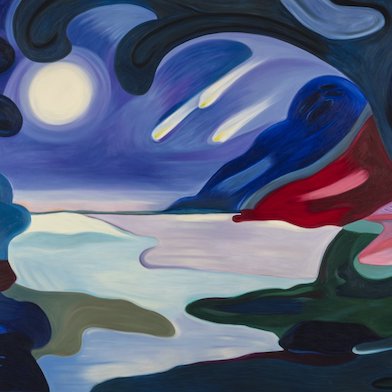Open: Thu-Sat 12-6pm
Visit
Santiago Galeas: Semillas de Memoria
Sean Horton, New York
Thu 13 Oct 2022 to Sat 19 Nov 2022
515 West 20th Street, Suite 3N, NY 10011 Santiago Galeas: Semillas de Memoria
Thu-Sat 12-6pm
Artist: Santiago Galeas
Sean Horton (Presents) is pleased to announce Semillas de Memoria the New York solo debut by Santiago Galeas. Galeas’s dynamic portraits forefront queer subjects within vibrant, naturalist landscapes, that act as portals into imagined worlds. Rooted in ecology research, identity, and vulnerability Galeas’s practice seeks to create conditions of connectivity that radically reclaim American traditions of portraiture and landscape.
Installation Views
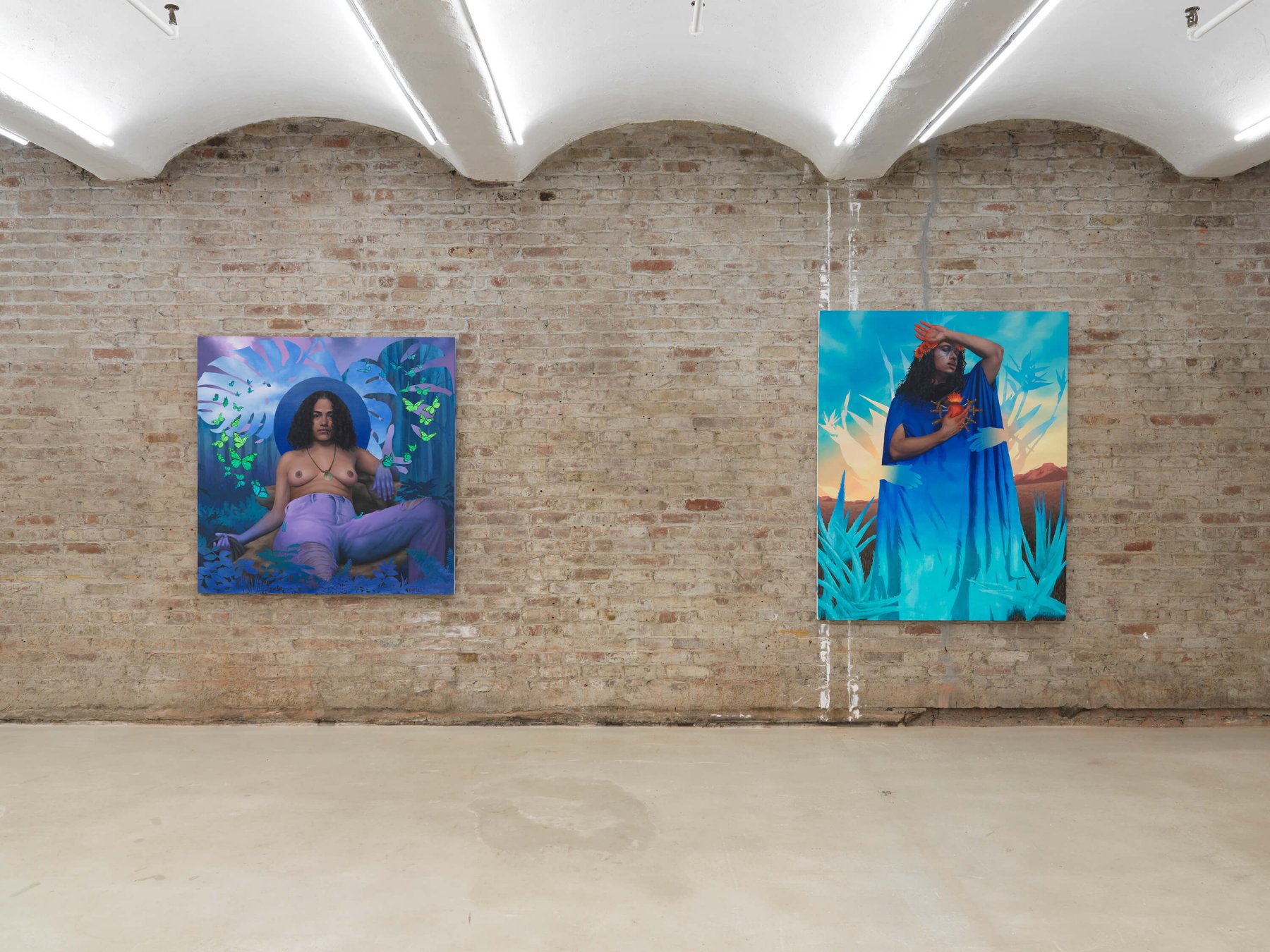
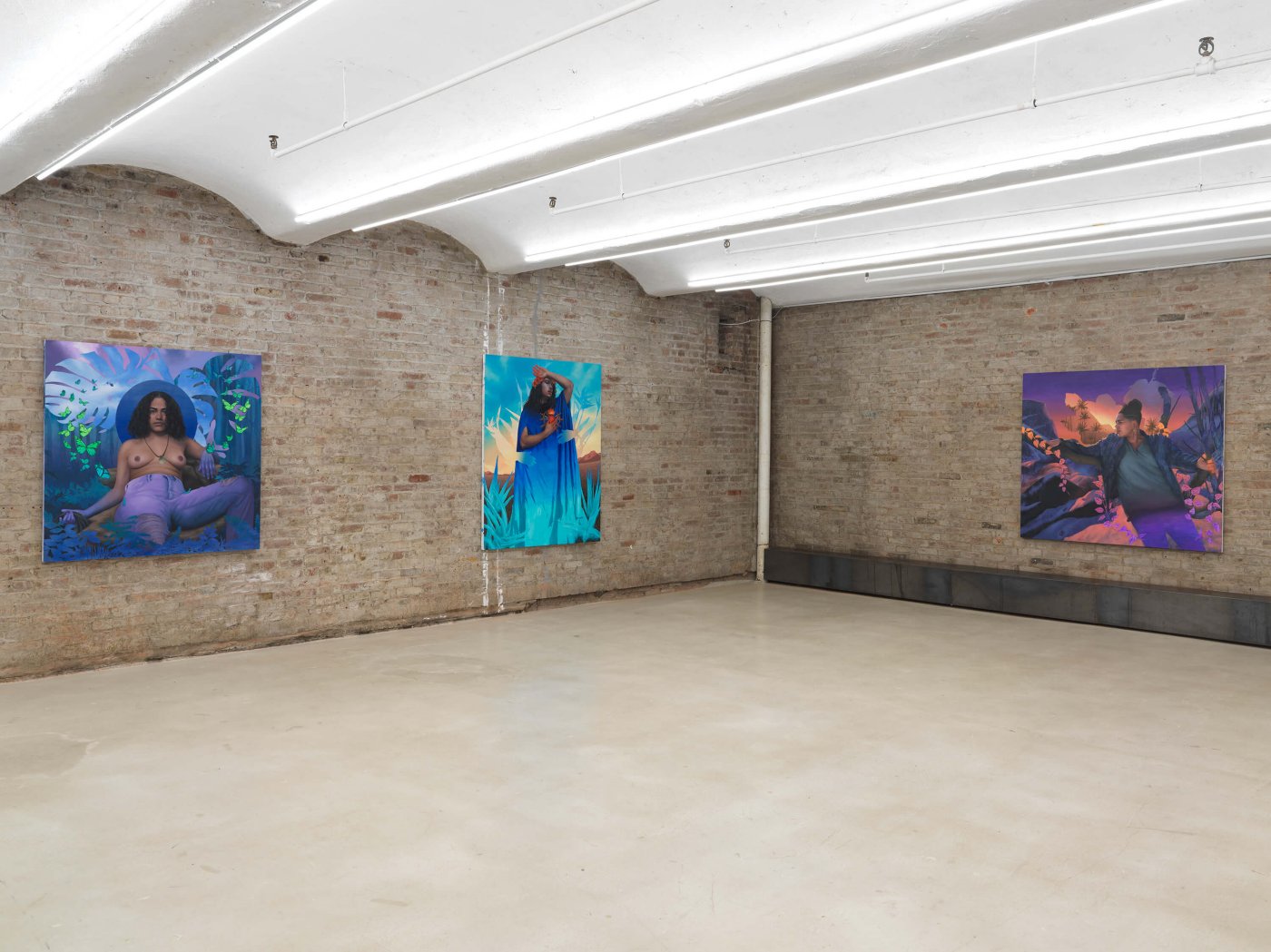
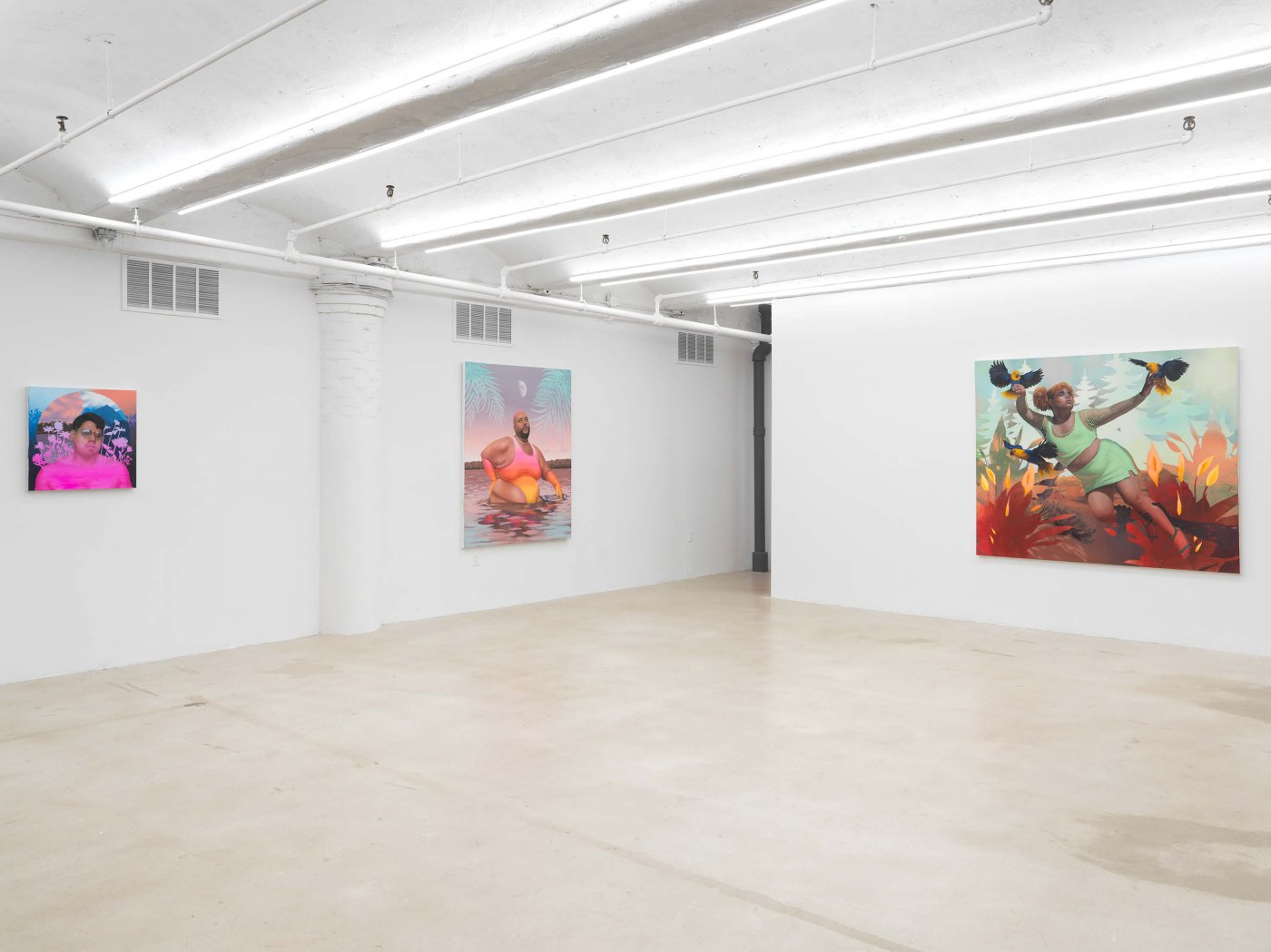
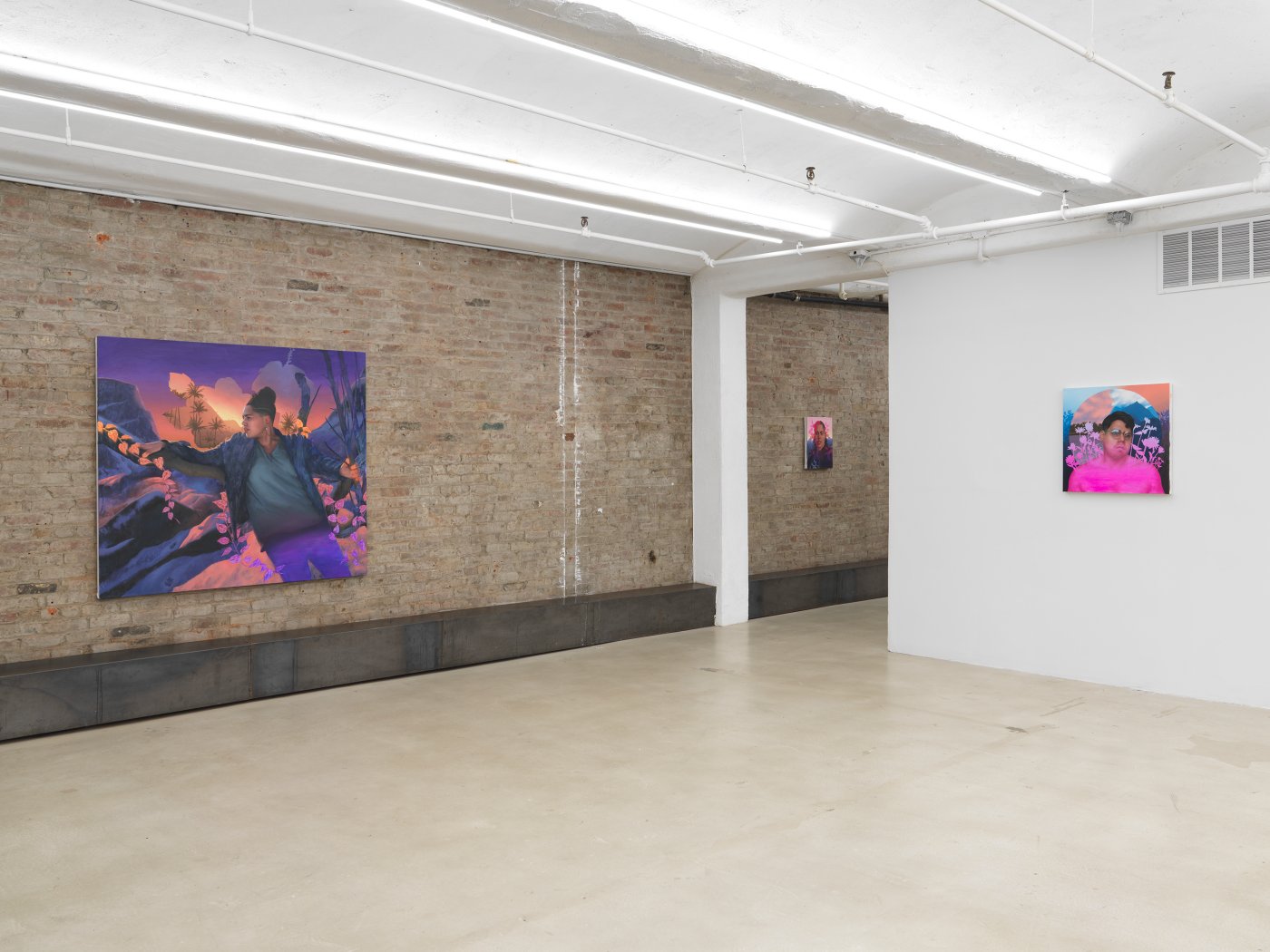
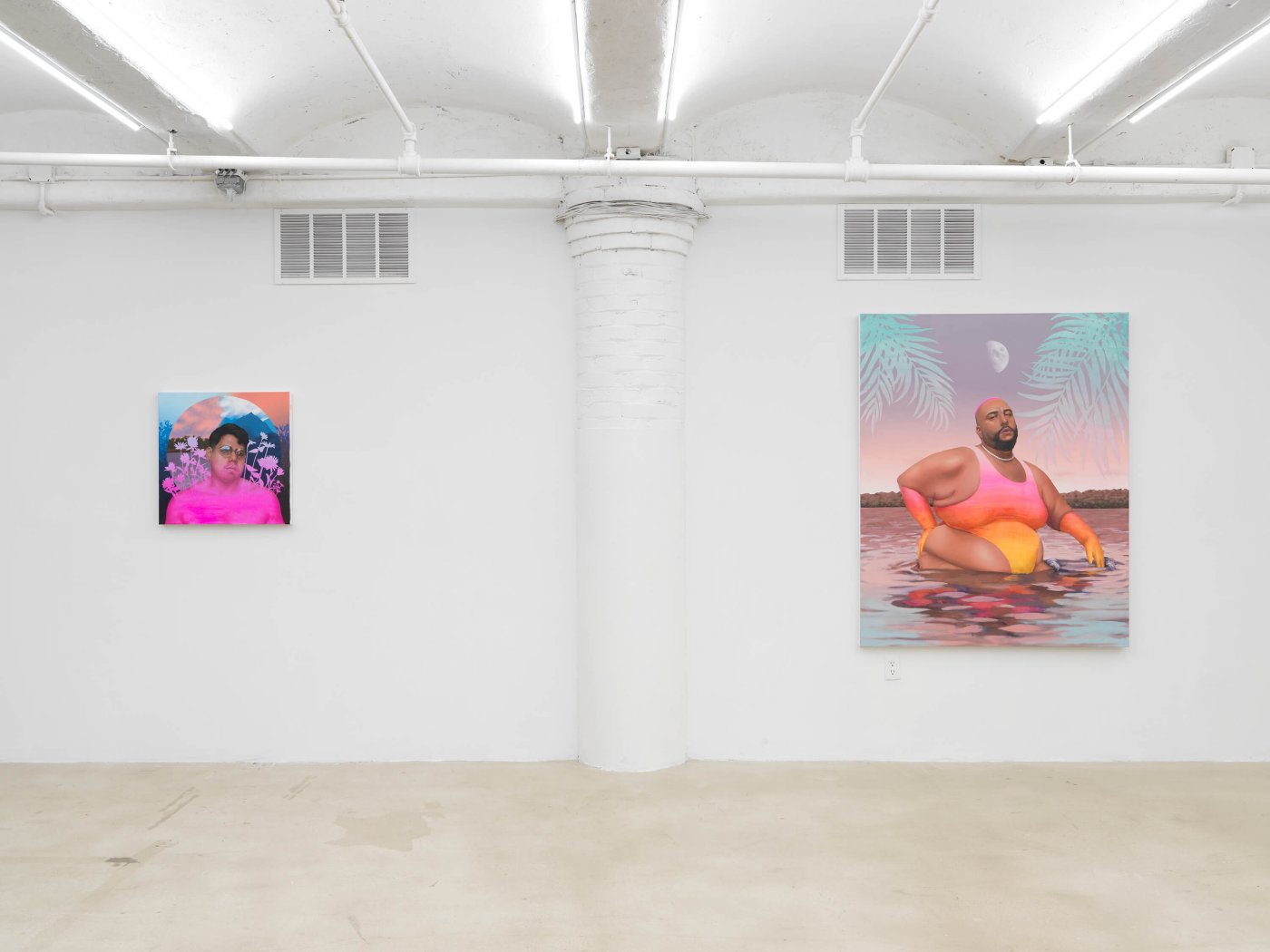
Wayfinder, 2022 visualizes the intersectionality of a queer, Latinx individual named Marisel. Drawing inspiration from her lived experiences as a Puerto Rican immigrant living in Philadelphia, Galeas depicts Marisel as a source of warmth in a cold place, caught in the middle of a wintery dawn in eastern Pennsylvania, not far from where she lives, and a hibiscus shaped portal that radiates the golden tropical landscape of Puerto Rico and hibiscus plants. Marisel treads between these worlds: between countries, between past and present, between hot and cold, between joy and sorrow.
Speaking to the aspect of ecology in his portraits, Galeas says, “research about plants and animals specific to my own ancestral countries of origin, or those of the subjects’, has been a crucial part of my practice. Each natural element that appears in my paintings has some sort of deliberate ecological or cultural association that contributes to the painting’s theme. Often I am reimagining bright, tropical plants in unlikely North American landscapes, using color harmony and compositional elements that create a site of belonging for those plants along with the figure.”
Santiago Galeas (b. 1991, Silver Spring, MD) lives and works in Queens, NY. The artist received a MFA from the New York Academy of Art and a BFA from the Pennsylvania Academy of the Fine Arts. He was a recent artist-in-residence Wolf Hill Arts, the Leipzig International Artist program, and the Nicolas V. Sanchez Scholarship Program.
Q&A with Santiago Galeas
Throughout your works, your subjects appear to be embedded within natural landscapes, or perhaps the landscapes are embedded in them? Could you share a bit about this stylistic approach?
At the beginning of the pandemic my partner and I found ourselves fleeing to the outskirts of Scranton, Pennsylvania. We lived for a few months in a very rural, very white area, and with that came feelings of uncertainty. Were we, an interracial queer couple, safe there? During this time, I was also able to connect with nature in a way I had never before. We took hikes, and from those hikes I harvested the materials to make terrariums. I loved building little worlds out of the natural elements around me. I began to ask myself what it meant to be a queer person of color in a space like this.
Queer people, especially queer people of color, tend to go to cities, densely populated places far away from nature, in order to find community. Among other things, my paintings are a sort of reversal of this phenomenon.
It’s also a reclamation of landscape as a medium. American landscaping portraiture specifically has a history of being used as tools of empire. My paintings don’t feature the subjects imposing on the landscape. Instead, they’re with nature, among nature. The paintings imagine a way in which the subjects might belong there.
Your portraits feature an array of bright colors with an emphasis on neon tones. What inspires your color palette?
On one hand, I think of my paintings as trying to find what I’ve been calling a “queer color palette.” These neons and bright colors speak to the vibrancy I find in my community, and there’s also a disruptive aggression to the way my paintings are that this palette belongs in this very old medium. But even before I was in touch with my queerness, I already came from communities with bright colors similar to these. The flag of my mother’s Peruvian hometown, Cuzco, bears the colors of a rainbow. I saw bright colors like these in the houses of El Salvador and in Peruvian textiles. It’s funny because I wear a lot of black in day to day life, but my paintings are more representative of what I appreciate about the world.
Queer and transgender people are the central subjects of your work. Are there certain aspects of your portraits that you collaborate on or do you work independently?
So the people I paint are often, though not always, friends or friends of friends. And regardless of whether they are friends, I start the interaction by having an extended conversation with them before ever touching a canvas. In these conversations I learn about their lives and experiences. And by the time I do start painting, I’m usually trying to paint from the intersection of our experiences as people who have been othered. With this show in particular I’m focusing on Latinx people, particularly immigrants and first-generation Americans.
Could you share a bit about the show’s title — Semillas de Memoria (Memory Seeds) in relation to the works on view? How did the name come about?
I found as I was doing the interviews with the subjects of these paintings, all Latinx people, that all of them carry the memory of another life with them. I think that’s common for immigrants, or the children of immigrants, people who have left one place to build a life somewhere else; you carry the life you left behind, but also the life you hope to build, or that you hope your children are able to build. A seed is something you can carry with you like that, something that has the potential to grow elsewhere even though it was native to somewhere else, while a memory is something that looks back. The people depicted here have to do both, look forward and backwards at the same time, and these images visualize that in-betweenness.
In addition to that, some of these subjects here just have experience with significant changes in their life. They might have gone broken ties with their family, or come out as trans or queer, or just gone through a bad break-up. In this sense, too, they carry the memory of another life with them.
The history of portraiture has been traditionally limited, forefronting predominantly White, upper-class individuals throughout Europe and the United States, often in settings that highlight their wealth and intellect. In what ways do your portraits respond to or deviate from this history?
There’s a kind of intimacy between myself and the subjects here that distinguishes these paintings. So much of the content of the paintings relies on how much the subject is willing to give to me in our conversations and when they pose for me. And then, as I start painting these, the portraits become an expression of myself too— how much of myself am I able to find in their story and how do I visualize it?
The subjects in this show are also queer and Latinx. They’re not people who have commissioned portraits, or are being depicted because of their wealth or prominence, but rather because of the fact of their existence. These are people who have to fight in some way to survive, to resist being erased by powerful forces in the world. And so these paintings are also acts of documentation, of bearing witness to these individuals as they already are.
